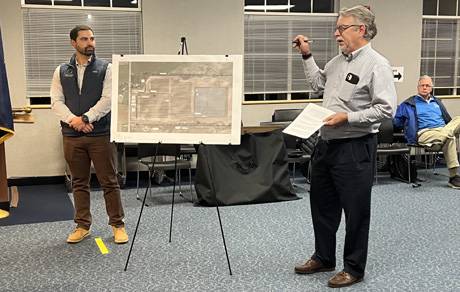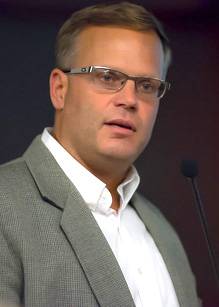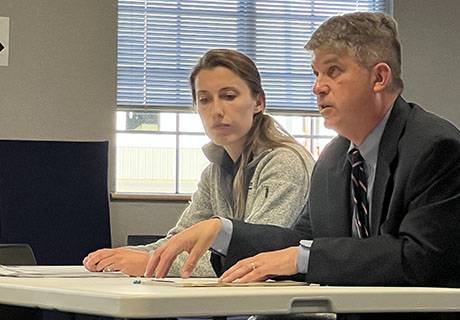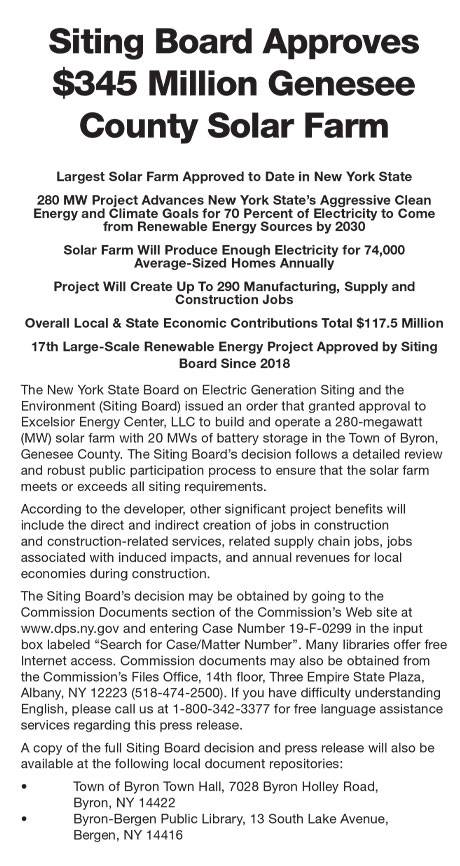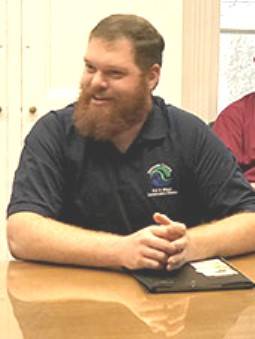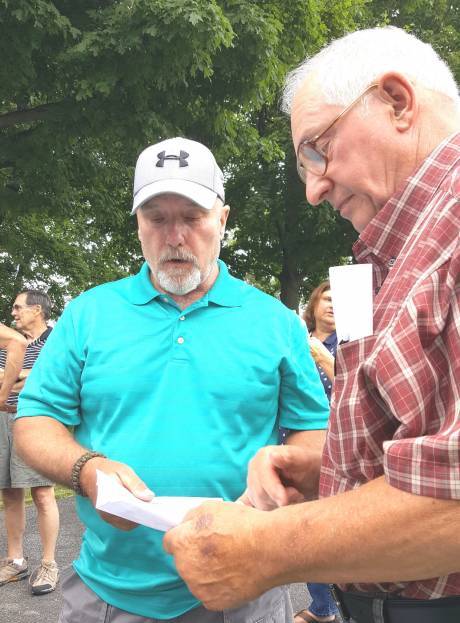Small-scale solar projects are on hold in the Town of Batavia until municipal officials, working with a paid consulting firm, can find the right ingredients to ensure a fair and effective solar ordinance.
Town Building Inspector Dan Lang took some time out of his busy day Tuesday to update The Batavian on the status of the new code, which he hopes will be drafted and approved over the next few months. In January, the town placed a moratorium on solar farms without establishing an end date.
“We’re putting out bids for a consultant and want to make sure it is the right fit for the town and matches up with our comprehensive plan,” Lang said. “We want to remain solar-friendly but we also want to make sure that we’re putting them in the right areas.”
As is the case with determining real estate values, the phrase “location, location, location” applies in the solar arena, Lang said.
“We have much to review and to sort out, but I can tell you that we’ve been tossing around the idea of incentive zoning for these systems – a tiered approach where you have your best locations, followed by areas that we would allow but would come with more restrictive setbacks and guidelines,” Lang explained. “Then, finally, a third tier where we really don’t want solar on prime farmland but if you’re going to put it here, this would have to be in a specific spot (and likely costlier for the developer).”
Part of the siting process is to identify areas where the transmission power lines have enough capacity to hook into the grid, Lang said.
Thus far, the Town of Batavia has approved five solar projects, all of them active and sitting on parcels of 20 acres or less and generating 2 to 5 megawatts of electricity. Those five are on Bank Street Road (on land owned by Thomas Lichtenthal), on Lewiston Road (two, Call Farms) and on Pearl Street Road (two, Dan Miller).
Five more are at various stages of construction and/or review and are yet to be activated. Those are on West Main Street Road (two, Fred Bowman), on Batavia-Stafford Townline Road (Daniel Underhill), on Galloway Road (Wayne Dunham) and on Ellicott Street Road (Donald Partridge).
Another five are in limbo, Lang said, due to the moratorium and the effort to adopt a new solar ordinance.
Lang said town officials have learned much through the process of approving the five systems, notably that they weren’t up to speed on the amount of buffer and screening needed to hide them from neighbors, and that they would have been better served by limiting the number of utility poles.
That’s where the consultant comes in.
“From experience, we realize we need to reach out and have a consultant come in and tell us some of the better areas for the solar – more or less, what companies will be looking for as far as transmission lines that have the capacity to move electricity from solar farms,” Lang said.
He admitted that it has been difficult keeping up with an industry that is constantly changing.
“For example, we’re finding that we can get away with more underground lines instead of looking at the ugly utility poles,” he said. “No matter what, it continues to evolve and then there is the matter of battery systems and battery storage to deal with. It’s all moving at a rapid pace.”
Lang said the objective is to respect the landowners’ right to put solar on their property while producing cleaner and greener energy in a location that doesn’t negatively impact the surrounding community.
“We realize – and this is a big thing – that supplemental income for the farmer who wants the solar there is important and we encourage that because that’s the highest and best land use value for them,” he said. “And we’re trying to find areas where it’s ‘out of sight, out of mind’ and not intrusive to the neighboring properties.”
Currently, the town requires a decommissioning bond on every project, Lang said.
“If something does go south with it, the system will be removed. It really is a farmland protection. If it is removed five or 10 years from now, you have soil that has been untouched and ready to go again for farming,” he said,
Lang acknowledges that solar projects draw complaints from those who live next to the proposed site.
“We’ve heard them all – they’re an eyesore, they pollute the land and so on,” he said.
When a consultant is selected and a new ordinance is drafted, the plan will be reviewed by county and town planning boards before going to the Town Board, Lang said. Until then, more meetings of a six-person committee that includes Lang will be scheduled and citizens are invited to send their opinions via email to solar@townofbatavia.com.
Other members of the committee are Town Board Member Chad Zambito, Town Planning Board members Paul McCullough and Donald Partridge, citizen representative Nancy Brach and Zoning Board of Appeal Member Brittany Witkop.

